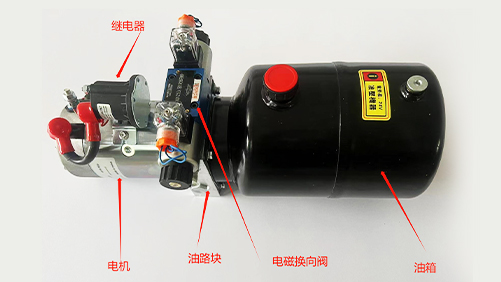Nov . 13, 2024 13:11 Back to list
seals in hydraulic cylinder manufacturers
The Role of Seals in Hydraulic Cylinder Manufacturing
Hydraulic cylinders are essential components in various industrial applications, ranging from construction equipment to manufacturing machinery. At the heart of their functionality lies a critical element seals. These seals play a vital role in ensuring the efficient operation and longevity of hydraulic cylinders, and the selection and manufacture of these seals are crucial for the performance of the entire hydraulic system.
Understanding Hydraulic Seals
Hydraulic seals are designed to prevent the escape of hydraulic fluid and to protect the internal components of hydraulic systems from contamination. They are typically made from a range of materials, including rubber, polyurethane, and other elastomers, which provide the necessary resilience, flexibility, and chemical resistance. In hydraulic cylinder applications, these seals perform crucial functions such as retaining fluid pressure, reducing friction, and preventing leakage.
Types of Seals Used in Hydraulic Cylinders
There are several types of seals commonly used in hydraulic cylinders, each designed for specific applications and operating conditions. The most prevalent types include
1. Rod Seals These seals are located on the extending rod of the hydraulic cylinder. Their primary function is to prevent hydraulic fluid from leaking out of the cylinder as the rod moves in and out. Rod seals must withstand dynamic motion and often operate in hostile environments where dust and debris may be present.
2. Piston Seals Positioned on the piston, these seals prevent fluid from bypassing the piston and ensure efficient transmission of hydraulic force. Piston seals must effectively manage pressure differences as well as provide a tight seal around the piston.
3. Buffer Seals These seals are often used in conjunction with rod and piston seals to provide additional protection against fluid leakage. They absorb pressure spikes and help manage the dynamic effects of hydraulic operations.
4. Guide Rings Although not technically seals, guide rings assist in stabilizing the movement of the rod or piston within the cylinder. They help to reduce wear on the seals themselves and improve overall system efficiency.
seals in hydraulic cylinder manufacturers

The Importance of Material Selection
The performance and reliability of hydraulic seals are heavily influenced by the material used in their manufacture. The chosen materials must be compatible with the hydraulic fluid and capable of withstanding varying temperatures, pressures, and environmental conditions. For instance, nitrile rubber is commonly used due to its excellent abrasion resistance; however, in high-temperature applications, fluorocarbon materials may be preferred for their thermal stability.
Manufacturers must also consider the hardness and elasticity of the materials to ensure that the seals can accommodate the operational tolerances of the hydraulic system effectively. An improperly selected seal material can lead to premature failure, resulting in costly downtime and repairs.
Manufacturing Processes for Seals
The manufacturing process of hydraulic seals involves precision engineering to meet stringent specifications. Techniques such as extrusion, molding, and machining are commonly employed to create seals that fit perfectly within hydraulic cylinders.
- Extrusion This process involves forcing raw material through a die to create long sections of seal that can be cut to the desired length. This method is efficient for producing seals with uniform cross-sections.
- Molding In cases where specific shapes and profiles are required, molding techniques are utilized. This allows for the creation of complex geometries that can enhance the seal's performance.
- Machining Precision machining is used for seals that must fit tightly within specific dimensional tolerances. This ensures that the seals maintain effective sealing properties under varying operational conditions.
Conclusion
Seals in hydraulic cylinders are a fundamental component that significantly impacts the overall efficiency and reliability of hydraulic systems. The careful selection of materials, combined with advanced manufacturing processes, ensures that these seals can withstand the challenges of their operational environments. As industries continue to evolve and demand more from hydraulic technology, the role of high-performance seals will become even more critical in driving innovation and efficiency in hydraulic applications. For manufacturers, investing in quality seals is not just an option but a necessity to guarantee system reliability and longevity.
-
Fork Lift Power Units - Hebei Shenghan | Efficiency, Reliability
NewsJul.13,2025
-
1.5-Ton Turbocharged Cylinder-Hebei Shenghan|Hydraulic Solution,Energy Efficiency
NewsJul.13,2025
-
Auto Hoist Power Units-Hebei Shenghan|Efficiency&Industrial Lifting
NewsJul.13,2025
-
Double Acting Power Units-Hebei Shenghan|Hydraulic Solutions,Industrial Efficiency
NewsJul.13,2025
-
1.5 Ton Lifting Cylinder 70/82-40-290-535 - High-Performance Hydraulic Solution | Hebei Shenghan
NewsJul.13,2025
-
Fork Lift Power Units - Hebei Shenghan | Efficiency&Reliability
NewsJul.13,2025
